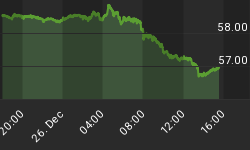In my June 6 and June 27, 2003 communications I showed that the 8 deep Monthly DJIA Coppock Curve buy signals since 1950 seem to pair off into 4 patterns on a particular scatter chart.
One of the 2 coordinates in that scatter chart is the Six by Ten CI-NCI Ratio (or Peter Eliades' simple CI-NCI Ratio smoothed by six 10-day moving averages.) When that is isolated on its own line chart, as to the same 8 signals, 4 pattern pairs seem to emerge once again.




The latest line chart is still unfolding. On it the green path has diverged greatly from the coral path in the past few months, seemingly demonstrating that the latest pattern pair has broken down. While that may very well turn out to be the case, notice that each of the other three pattern pairs persists despite suffering a similar great divergence or two, some lasting up to a year or more. So, there is ample time for the green path to rejoin the coral path in order to preserve the pattern pair. The big question is: Will it do so?
















